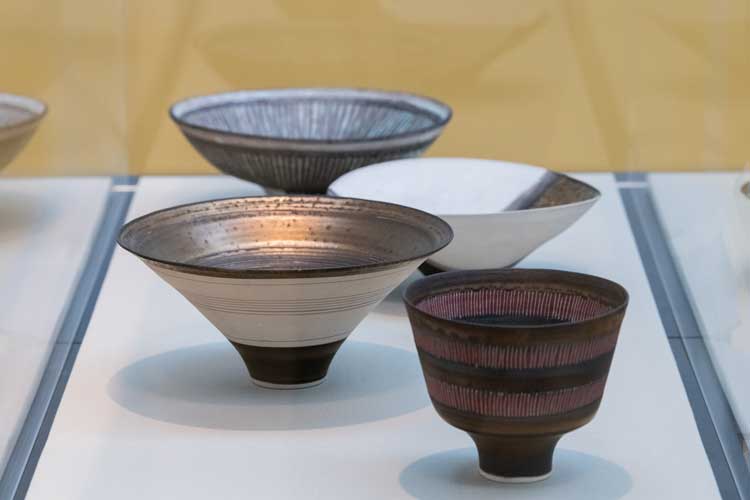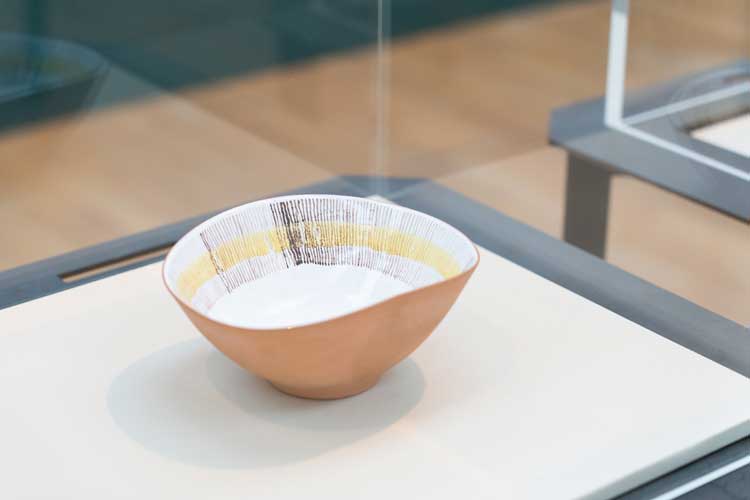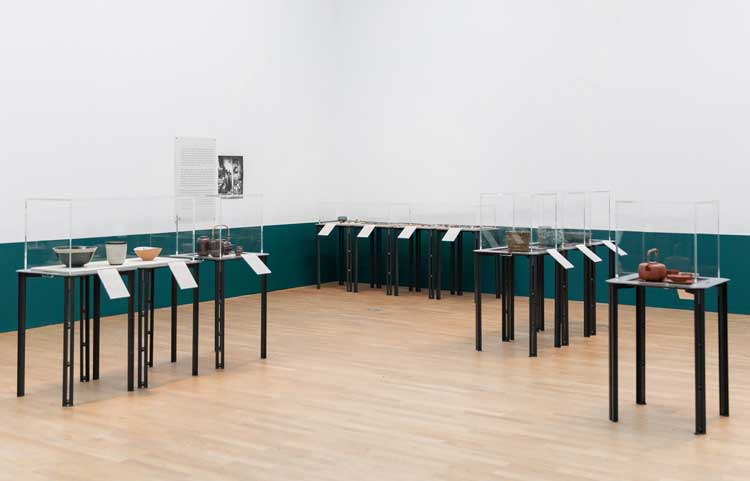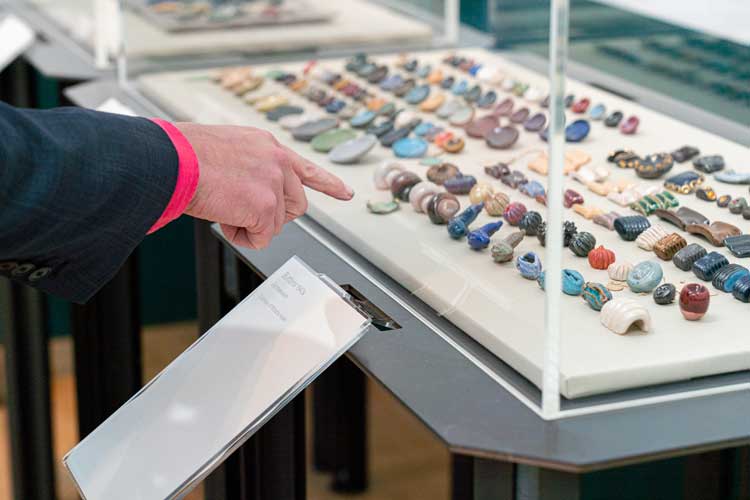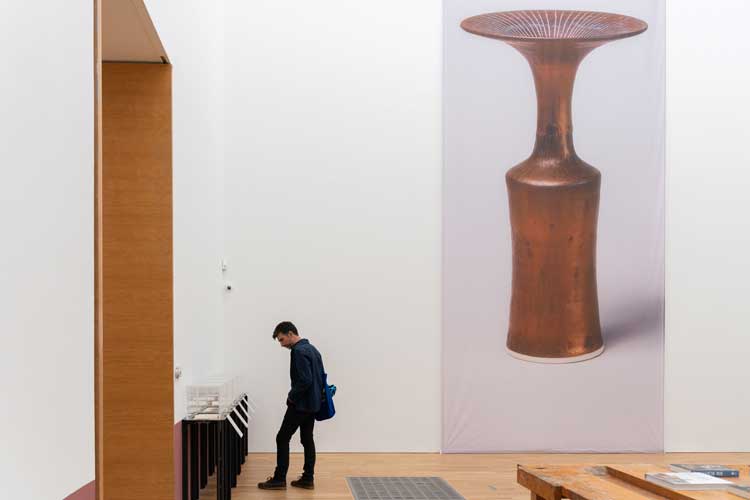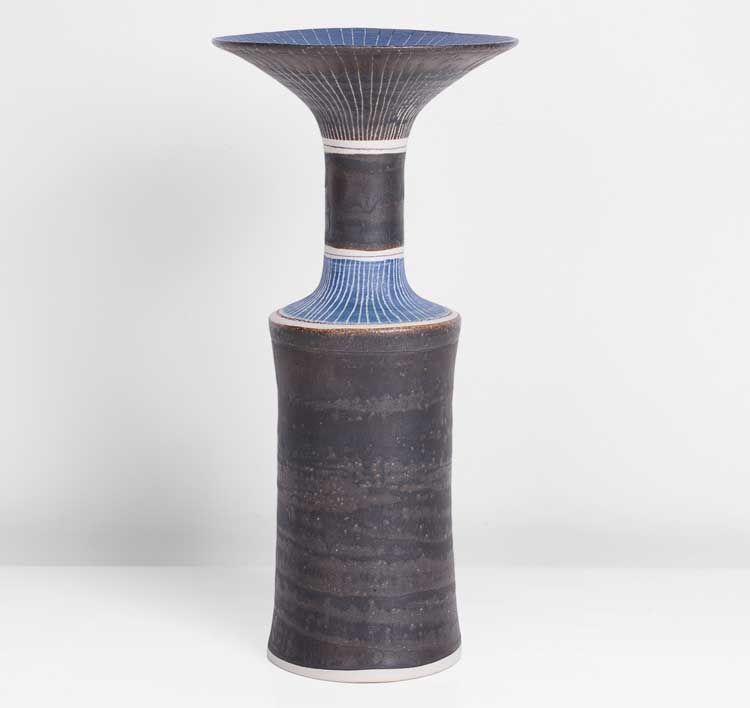

MIMA, Middlesbrough
11 November 2022 – 12 February 2023
by BETH WILLIAMSON
Lucie Rie (1902-95) was a singular figure in the art of ceramics. As one of the few women working self-sufficiently as a potter, Rie was an independent mind, often diverging from dominant trends in pottery of the 20th century. This exhibition, a collaboration between the galleries of Cambridge University and Teesside University, has been a long time in the making with curators still working under the strictures of various lockdowns for much of the time. The resulting exhibition, viewed here at Middlesbrough Institute of Modern Art (MIMA) is an open, articulate, thoughtful show that encourages visitors to move around the galleries freely and encounter one work after another, many of which seem to float in the space, rather than being pinned down within a vitrine. The mode of display was an important consideration here, with specially commissioned vitrines that support and protect the work, as they must, but somehow enable it to be viewed uninterrupted from all sides, as if perhaps it were sitting on a kitchen table or a sideboard in someone’s home. To show work of such domestic scale in a gallery setting is not easy, but MIMA has achieved something uncluttered, elegant and flowing in this curation. It is proof, if it were needed, that exhibitions such as this can be made to feel accessible to all, something further underlined by MIMA’s thriving community groups and events.
[image7]
Rie’s story is a fascinating one. Born into a Jewish family in Vienna, she trained at the city’s Kunstgewerbeschule from 1922. After the Nazi annexation of Austria in 1938, she fled the country. Somehow, she managed to ship equipment ahead of her and even packed some pots in her suitcase. Some of these – a plant pot from 1930-38 and a vase from 1936-37 – are on display here and their mottled and pitted glazes seem to say something about their difficult journey from Vienna to London, wrapped in clothing for safe-keeping, and kept by Rie in her studio of the next five decades.
[image3]
Arriving in London at the brink of the second world war, Rie made ceramic buttons for the fashion industry to make a living. This was a necessary pragmatic shift for her since, although she was well known in Austria as a prize-winning potter, she was unknown in England. It was not until 1949 that she was offered her first solo exhibition in London at the Berkeley Galleries. Further recognition came when she was invited to contribute to the Festival of Britain in 1951, exhibiting pots and jewellery, as well as making commemorative souvenirs for sale. Rie’s earthenware buttons of the 1940s exhibit varied colours and designs and this diversity of approaches meant that she had to experiment and extend her understanding of glaze chemistry, something that allowed her to explore further in her pots in later years. At her new home and studio in Albion Mews, in north London, she recruited a number of assistants to help make buttons, among them Hans Coper (1920-81), with whom she would collaborate until 1958. While there are some pieces stamped with both potters’ initials in this exhibition (often Coper threw the form and Rie glazed), the emphasis here is on Rie as an independent potter.
[image5]
For Rie, pottery was an adventure. As she said: “To make pottery is an adventure to me, every new work is a new beginning.” Her work ranged from very practical domestic objects such as coffee cups and saucers, casseroles and teapots, to her signature vases with elegant swooping bottle-neck forms and neat footed bowls with a degree of poise you might think impossible from an inanimate object. Bowls sometimes took a more unusual form when the rim was squeezed into a dented oval, done after it had been thrown. These pots and bowls were often made for commissions and when Coper left her studio in 1958, she began to experiment further.
[image13]
She worked on glazes that bubbled or melted when fired, creating new volcanic-like finishes on pots. She also worked with different coloured clays to create distinctive spiral effects. Her trademark sgraffito finish, already used in the late 40s and early 50s, continued to be used with some nice examples of such objects included in this exhibition, including a three-piece cruet set (to hold salt, pepper and mustard) from c1956, beautifully decorated with sgraffito and inlaid line. She and Coper had come across the technique while visiting the Avebury stone circle in Wiltshire where they saw bronze age bowls etched with a bird’s bone. New colours and surfaces were explored by Rie, too, with pitted and speckled glazed appearing on bowls and vases. The irregularities of the finish did not concern her and were closer in appearance to the early pots she brought from Vienna than anything else. The organic, weathered finishes she explored in the 60s gave way to distinctive blacks, yellows and golds in the 70s and beyond. New crisscross “knitted” finishes and other colours – green, turquoise, – began to appear in her work in the 70s and 80s too.
[image2]
The final piece in this exhibition is an exquisite porcelain bowl made by Rie in 1990, when she was 88 years old. This perfect little pink footed bowl in sgraffito finish employs many of her signature techniques. Presented alone in a mirrored vitrine, it is one of the very last pieces she made. Its solitude is emblematic of Rie’s independence and ingenuity as a consummate potter of the 20th century. It has to be hoped that this exhibition’s celebration of her achievements with bring her work to the attention of many more people who will be enriched by the work and by Rie’s story.
• Lucie Rie: The Adventure of Pottery will tour to Kettle’s Yard, Cambridge, from 4 March to 25 June 2023 and the Holburne Museum, Bath, from 14 July 2023 to 7 January 2024.
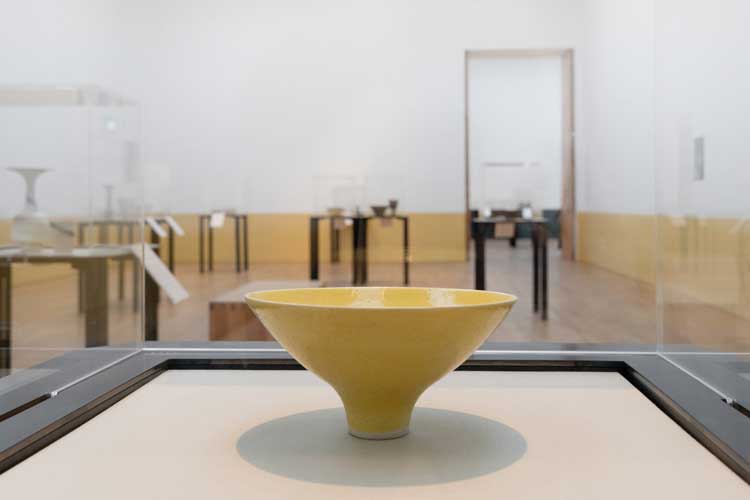
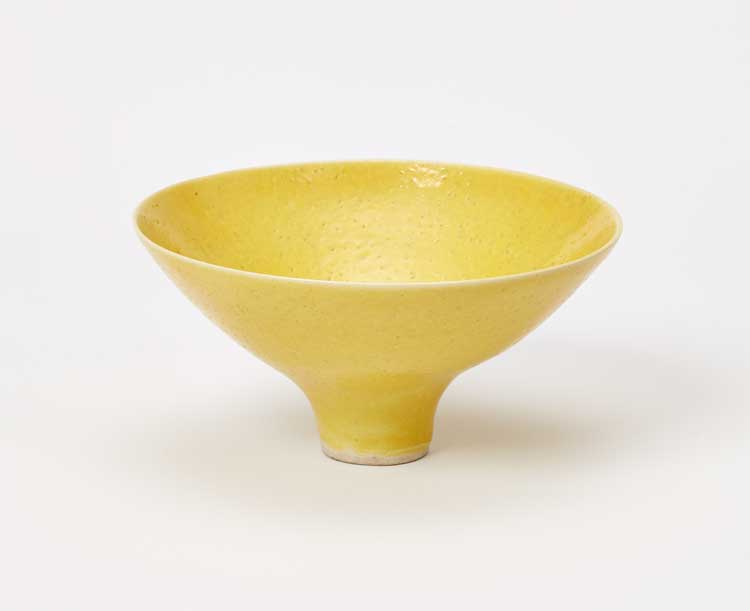
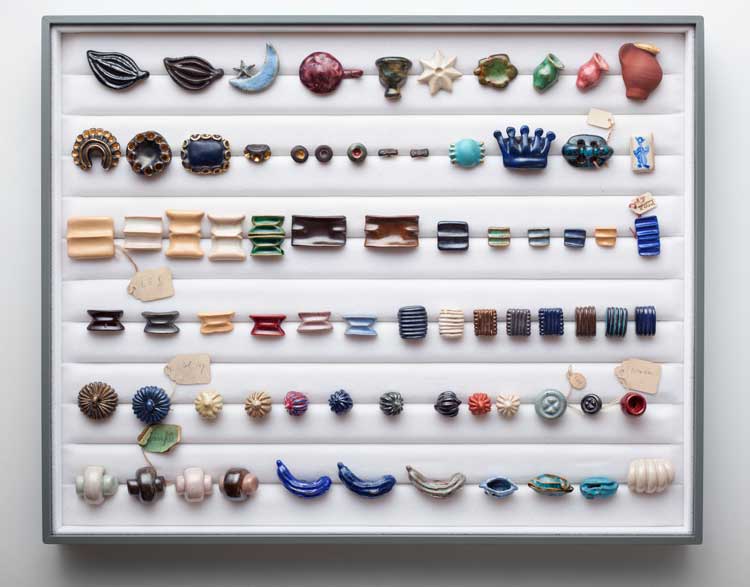
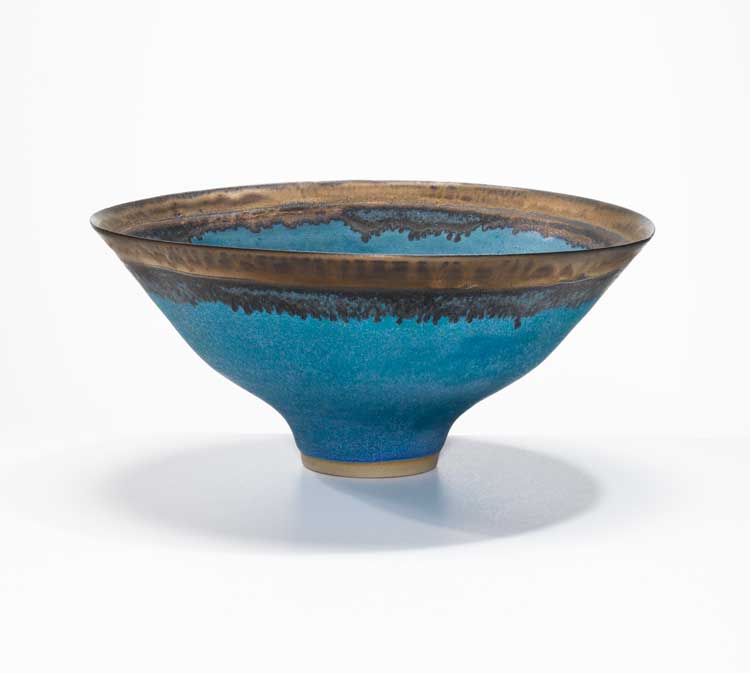
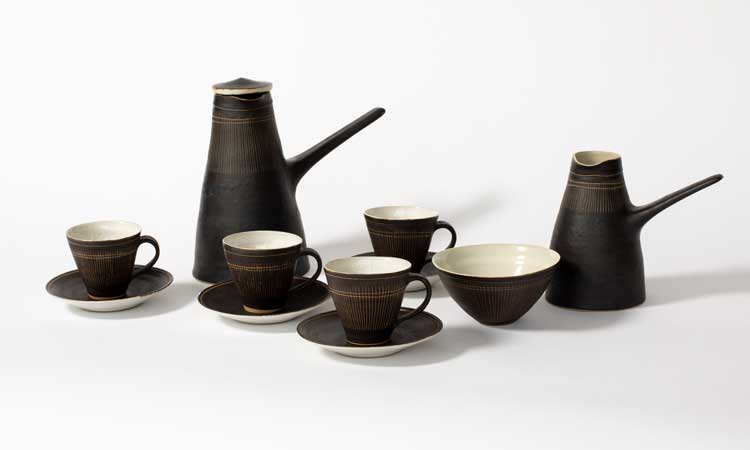
.jpg)
